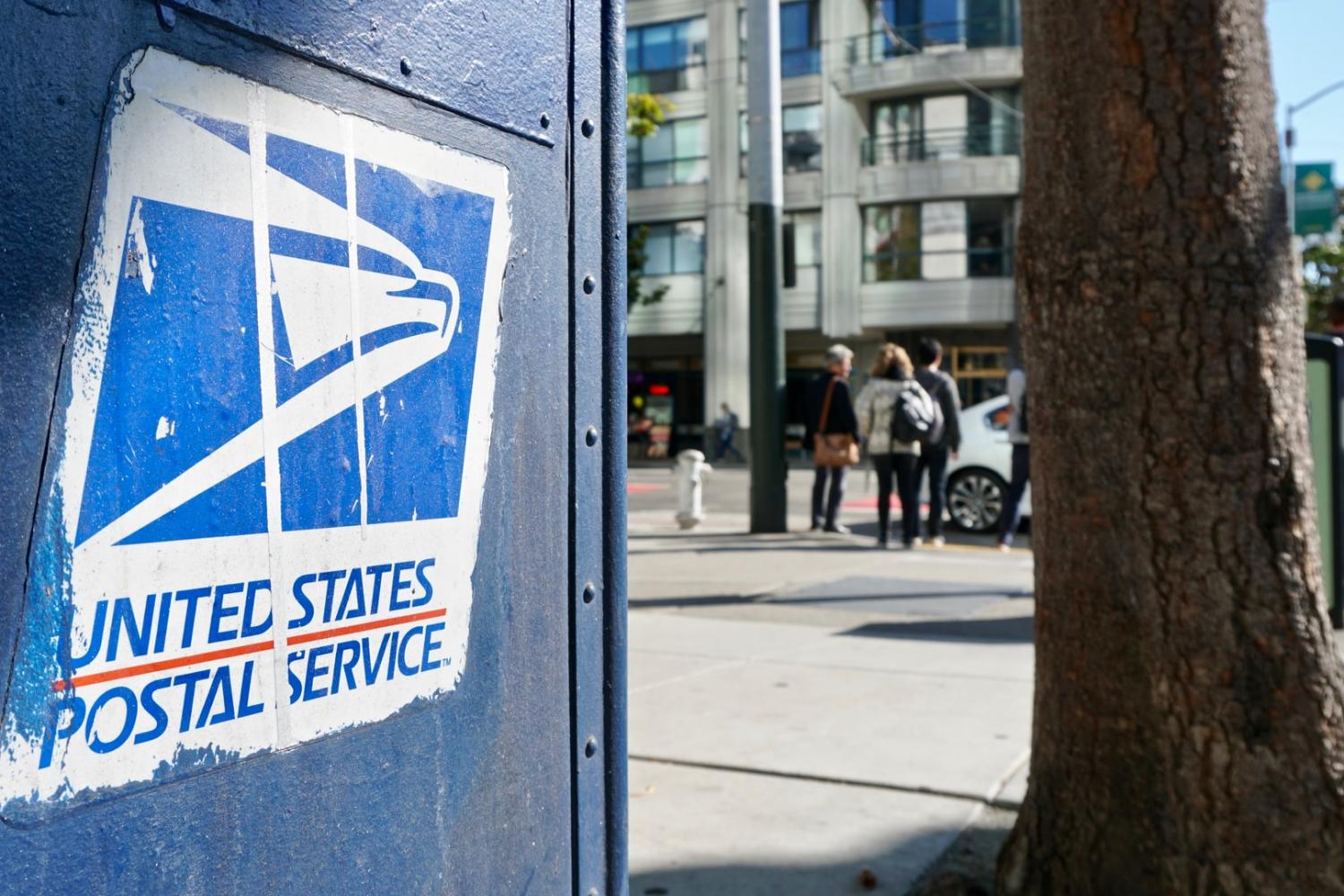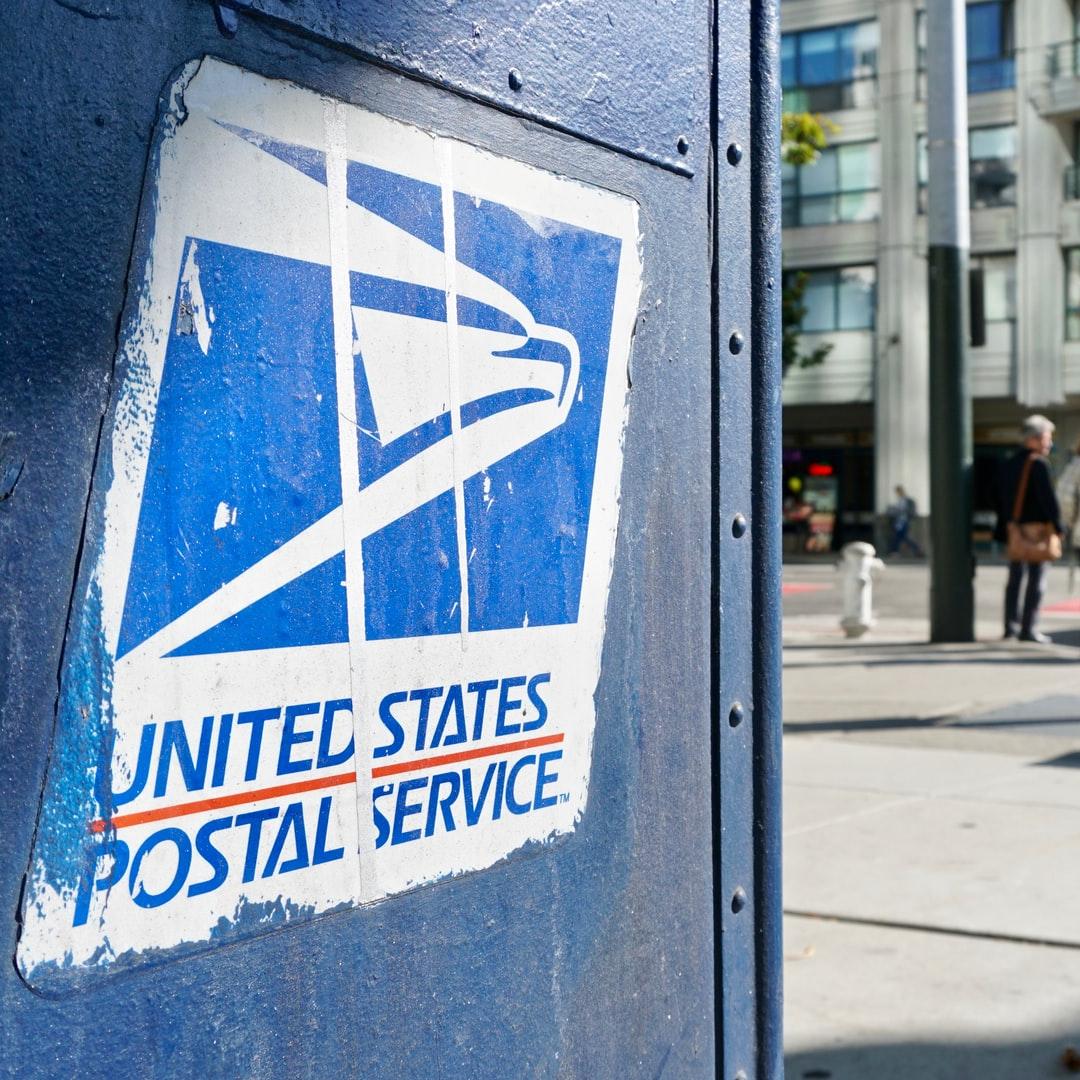Can the Circular Economy Save Us? Experts are Betting on It


With the global economy in a free fall and much of the world in crisis mode, the tendency can be to focus on putting out the little fires rather than look up and see the real threat on the horizon: a planet in big trouble. For Accenture’s Peter Lacy, co-author of The Circular Economy Handbook, the circular economy is the blueprint to recovery, and there’s no time to waste.
The circular economy offers business a way to step up
“You can't be a successful business in a failing economy or failing planet. That's really where it starts. The global economy has been in free fall at points in the last three or four months in ways that we haven't seen in 200 years of economic history. It’s not the way we would have wanted to go about it, but it has opened up a window of opportunity,” Lacy told TriplePundit. “We've entered a very important and critical juncture in the global economy and maybe even in human civilization, and business needs to step up and be counted on, both in its own interest and also in the interests of societies around the world, if not humanity.”
Lacy is Accenture Strategy's senior managing director for Europe as well as the United Kingdom and Ireland. He also sits on Accenture’s Global Leadership Council and leads the firm’s work with the World Economic Forum. For him, and co-authors Jessica Long and Wesley Spindler, the circular economy is the most palpable way a business can step up. The Circular Economy Handbook is built on insights from 1,500 case studies (300 of which are in the book) to give companies a practical view on how they can take transformative steps toward circularity and create new competitive business opportunities.
A $4.5 trillion opportunity at stake
There is $4.5 trillion at stake by 2030 by radically departing from the traditional “take-make-waste” production and consumption systems, according to Accenture’s 2015 book Waste to Wealth. Lacy says he sees three mandates for business in this current economy — and that the circular economy is the way to rise to those challenges:
“The first is that the model of globalization and the model of capitalism that we've pursued globally has created enormous inequalities and has probably created a situation where it's now going through one of its most fragile phases,” Lacy says. “We need to rebuild a system that is fair, produces social justice, reduces inequalities, and tackles many of the things that many people care about in a way that isn't just beneficial for the few, but for the many.”
He adds: “The second is the Fourth Industrial Revolution is really only rhetoric at the moment in many respects. There is the potential for an incredible cluster of scientific and technological triple breakthroughs to deliver an industrial revolution that truly creates benefits for many different constituencies. But as of yet, those technologies have not been put to use in a way that has truly created the Fourth Industrial Revolution and truly achieve their potential to benefit humanity.”
Finally, Lacy emphasizes how the final mandate adds to the sense of urgency:
“And the third piece is that we have not yet created either a macro- or micro-level model that really hardwires and softwires into the global economy and how companies operate, the absolute necessity to deliver on the U.N. Sustainable Development Goals in the next decade.”
The circular economy is a chance to reinvent a failing system
Now, the novel coronavirus pandemic has broken wide open both the weaknesses and potential strengths in the way the modern world functions. But now there is the chance to inspire economic systems to change on an unprecedented level, as we’ve seen with the Build Back Better movement among some government and business circles.
“There are suddenly tipping points in the next decade that have truly prepared us for a pathway to sustainable development in the future,” Lacy says. “The circular economy is not a panacea, but it is one very important way of reframing and rethinking the relationship between the economy and the use of scarce or harmful natural resources in ways that allow companies to innovate and think creatively about their business models, their products and services, and the partnerships that it takes to deliver those while being commercially successful.”
Circular innovations can yield business benefits
For companies that have successfully applied the concepts of the circular economy, there are numerous benefits, Lacy adds: “Revenue growth comes through cost reduction, through risk management, through intangible assets, brand and reputation, as well as quantifiable material, circular economy and sustainability impacts.”
One example is Winnow, which both won The Circulars “Ecolab Award for Circular Economy Tech Disruptor” and the overall “Winner of Winners Award” at the World Economic Forum in 2019. Winnow’s aim is to have a global impact on food waste reduction in large-scale kitchens. Its technology provides chefs with the digital tools to quickly and easily measure waste and the analytics to pinpoint waste reduction opportunities. Winnow’s existing manual system is already used by thousands of chefs in more than 40 countries, and the company told VentureBeat it has helped save the equivalent of $30 million in food from ending up in landfills.
Another company Lacy raises as an exemplary case is global beer giant AB InBev, the innovations of which 3p has covered previously. AB InBev’s breweries already achieve an average 98 percent recycling rate for packaging material. By 2025, 100 percent of its product will be in packaging that is returnable or made from majority recycled content, the company has pledged.
Then there’s Loop, which 3p and many have described as the “milkman model reimagined.” The company offers a circular shopping platform that focuses on packaging of everyday essentials like shampoos and toothpaste, transforming them from single-use disposals to durable, refillable and feature-packed designs. The pandemic has spiked a rise in single-use plastics, in part out of fears that reusables are less hygienic. But as Heather Crawford, Loop's global VP of marketing and e-commerce recently told 3p, that simply isn’t the case: “Single-use is not sterile, either.”
Pivoting investments toward the circular economy
While Lacy and his colleagues have collected hundreds of examples like these across every industry in The Circular Economy Handbook, there is no one path that will fit every business. And given a recent report suggesting that the world is only 9 percent “circular,” there is still a long way to go. The point, however, is to do something. “If ever there was a moment for large-scale systems change, it is now,” Lacy says.
What makes Lacy optimistic is what he describes as all the good work being done already, and that some governments, notably the European Union, are using the wake-up call of the pandemic to put stimulus funds into a transition toward a low-carbon and circular economy.
As Lacy sums up: “There's a good chance that those chunks of investment can be a pivot and an accelerant of some of the bigger investments that are required. We certainly can't afford to miss that window of opportunity, but I am cautiously optimistic that governments are looking to use the necessary COVID spending to stimulate the economy and to empower companies to use it to pivot their infrastructure.”
Editor’s Note: Amy Brown served as copyeditor for The Circular Economy Handbook.
It’s a Crime to Interfere with the USPS, So Why Won’t Business Leaders Speak Out?


From a few scattered complaints about slow mail in July to a fully blown national crisis in August, the apparent sabotage of the U.S. Postal Service (USPS) should spark outrage from business leaders across the country. Nevertheless, even as some members of Congress and states have moved to bring criminal charges against Postmaster General Louis DeJoy, corporate executives are missing a golden opportunity to defend a centuries-old civic institution that enjoys broad public support.
Charges of criminal interference in the 2020 general election…
The smooth functioning of the USPS is always important, and this year even more so. Many states already allow or require voters to use mail-in ballots, and the COVID-19 pandemic has compelled millions more voters to use mail-in ballots for the first time.
As early as May, Democratic members of Congress began raising alarms that DeJoy was implementing sudden changes in the operations of the USPS that had the appearance of intentionally disrupting the mail in advance of the 2020 election cycle.
Laying the question of election tampering to rest, last week President Donald Trump admitted publicly and confirmed that DeJoy’s changes were all but certainly intended to disrupt the November elections.
Further hammering home the point, last month a U.S. Postal Service representative wrote to elections officials in 46 states, warning of “a risk that ballots requested near the deadline under state law will not be returned by mail in time to be counted.”
Adding even more fuel to the fire, news has surfaced that DeJoy ordered the removal of sorting machines from post offices. Hundreds of blue USPS drop-off boxes are also being removed from neighborhood streets in targeted areas around the country.
…but the business community suffers as well
Despite the focus on election interference, the impact is far more widespread than the delivery of ballots. Those effects land squarely on the shoulders of the business community.
In early July, The Washington Post reported that DeJoy’s changes posed risks to business and employment transactions as well as delaying personal letters and packages.
That should have raised alarm bells across the business community, but it didn’t.
On July 23, one leading news organization in the northeast recounted widespread complaints throughout the state about how the changes at the USPS were affecting businesses and workers. “Many New Jersey residents are fuming as they say they’ve gone days without mail and packages being delivered, complaining of missing deadlines for checks and job applications,” reporter Torreo Torrejon of NJ.com observed.
Controversy at the USPS is about more than ballots
More recently, reporters — and lawmakers — have focused on potentially life-threatening delays in the delivery of medicines and other healthcare equipment.
In particular, military veterans have been affected by disruptions with the U.S. mail service. Last week, for example, Stars and Stripes reported that a group of 31 Democrats raised the alarm over “many troubling reports from veterans waiting weeks for their prescriptions to arrive.”
Stars and Stripes further noted that “the Department of Veterans Affairs fills 80 percent of its prescriptions by mail — about 120 million prescriptions per year going to 330,000 veterans.”
Finally, on August 16 The Raw Story summarized the impacts to date, reporting that entire towns and cities have received none — as in zero — mail for days at a time.
Lawmakers take action against criminal disruption of the U.S. Mail
Although business leaders appear to have declared radio silence on the issue, lawmakers are beginning to take action.
Last Friday, Democratic U.S. Representative Bill Pascrell of New Jersey’s 9th District announced that his office has made a criminal referral to New Jersey Attorney General Gurbir Grewal. He is seeking a state grand jury investigation of “electoral subversion by Donald Trump, U.S. Postmaster General Louis DeJoy, and other possible Trump administration officials in their accelerating arson of the United States Postal Service (USPS).”
Arizona Secretary of State Katie Hobbs has also formally requested an investigation by the state’s attorney general, stating that it is “against the law to ‘delay the delivery of a ballot.’” Connecticut Attorney General William Tong also appears ready to take action on grounds of deliberate election interference.
All eyes on the U.S. House
Meanwhile, the U.S. House of Representatives has introduced legislation aimed at restoring the USPS to normal operations. In late July, the Democratic-controlled House Oversight Committee attempted to hold a hearing but was unable to bring DeJoy to make an appearance. On August 3, the Committee instead formally invited him to a hearing scheduled for September 17.
Considering the economic and health impact of the chaos at USPS since early August, the lawmakers may have to rethink their timeline. The House and Senate are on recess this month, and pressure has been increasing to recall Congress for an investigation.
The Republican-controlled Senate is unlikely to take action, despite the results the disruption has had on Majority Leader Mitch McConnell’s home state of Kentucky. However, Democratic Speaker of the House Nancy Pelosi appears willing to recall the House.
As of this writing, Pelosi has not made a final decision, and the delay has been frustrating for voting rights advocates.
Where are the business leaders?
However, the longer that House members stay in their districts, the greater their opportunity to hear firsthand from their constituents, including business leaders.
DeJoy is a Republican megadonor, so the whole situation is clearly in the lap of GOP partisanship. Allegations that he has had stakes, even if relatively small, in two USPS competitors, FedEx and UPS, further provide critics with ammunition for charges of corruption and conflict of interest on the part of Trump appointees. Additional investments DeJoy has reportedly made have given his critics more reasons to criticize the changes at the USPS over the past several weeks.
Nevertheless, the systemwide disruption of business mail should enable corporate leaders to skirt both the political and corruption angles and insist on a return to normal operations from a straightforward, bottom-line perspective.
It shouldn’t be much of a stretch. After all, numerous business leaders have stood up to the Trump administration on issues such as preserving the DACA program and other immigration issues from the very beginning.
Others are taking action on gun safety and COVID-19 response, among other areas where the Trump administration has failed to act. Still corporate leaders are responding, in varying degrees, to employee activists who oppose Trump policies on climate change, among other issues.
The U.S. Postal service enjoys wide public support regardless of political affiliation. Business leaders who want to keep their corporate social responsibility profile in good standing have an opportunity — and a duty — to step up and defend it.
Editor’s note: The Speaker of the House has since announced a special congressional session this week to vote on legislation that would roll back recent changes made across the USPS. The USPS has since backed down from its proposed changes.
Sign up for the weekly Brands Taking Stands newsletter, which arrives in your inbox every Wednesday.
Image credit: Tareq Ismail/Unsplash
Ocean Plastic Bike Grips: Another Step Toward a Circular Economy


Bike grips are the most recent item to be touched by the ocean sustainability movement and advocates for a circular economy. Bontrager, a bicycle component and accessory maker that's part of the Trek family of brands, has released a handlebar grip that includes a core composed of plastics that could have otherwise found their way to the open ocean.
This is not Bontrager’s first attempt at repurposing ocean-bound plastics. Last year, the company announced that its popular Bat Cage water bottle holder would now be made from recycled end-of-life fish nets. The company claims that one year of manufacturing this little cage saves 44,000 square feet of fishing net from entering the ocean.
The cage and grip are examples of the baby steps necessary for moving closer to a circular economy. Those at Bontrager see the grip as an “exciting move into a new product category and an expansion that sets the stage for using sustainable manufacturing methods for more plastic bike parts,” the company said in a press statement.
Collaboration opens the door to the circular economy
Bontrager’s journey to ocean-bound plastics began with collaboration. At the end of 2017, tech giant Dell and conservation nonprofit Lonely Whale created NextWave, a consortium of companies convening to create supply chains for ocean-bound plastics. Trek was a founding member, and it was through NextWave that Bontrager found a partnership with Bureo, based in Ventura, California. Bureo collects discarded fish nets, eventually shreds and melts the plastic into pellets, and creates products like the Bat Cage.
Cooperation is a building-block of NextWave. Kevin Brown, chief supply chain officer for Dell Technologies, said in NextWave’s 2019 Annual Report: “As we’ve become more engaged in the challenges facing our oceans, it’s become increasingly clear that the solution to marine plastic pollution requires bold innovation and open collaboration. No company can solve this issue alone.”
A new partnership with Plastix was the basis for Bontrager’s grip. The Danish cleantech company recycles fishnets, trawls and ropes into so-called “Green Plastic." These materials are sourced from ports, net makers and plastics collectors from around the world.
Innovating toward a circular economy boosts the bottom line
In only a couple of years of partnership, NextWave members have proven the viability of ocean-bound plastics as a resource. HP has created ink cartridges and display monitors using plastic bottles from Haiti. Ikea designed a collection that includes a tablecloth, two cushion covers and a polyester bag. Interface has developed carpet tiles.
Companies that strive toward a circular economy will benefit from this work. A 2017 study from The World Business Council for Sustainable Development found eight reasons for businesses to employ circular economy practices. A few of these included engaging customers and employees, spurring innovation, and differentiating themselves from the competition.
The last point was mitigating “linear risk exposure,” which takes a long view but applies to every industry. For one, establishing a circular economy is key to tackling climate change, an issue that touches every single company and every single life.
“A 1.5 degree world can only be a circular world,” Harald Friedl, CEO of Circle Economy, said at the 2019 World Economic Forum annual meeting, referring to the multilateral push to cap global temperature rise at 1.5 degrees Celsius. “Recycling, greater resource efficiency and circular business models offer huge scope to reduce emissions. A systemic approach to applying these strategies would tip the balance in the battle against global warming.”
Small steps like reconfiguring a bike grip can make ripples toward circularity in the global business community not only through the waste captured and reused, but also by putting these issues at the forefront.
NextWave’s managing director, Dune Ives, wrote in the 2019 annual report: “Today, NextWave member companies are preventing plastic from reaching the ocean by demonstrating that ocean-bound plastics carry a commercial value, and in doing so, are raising awareness across the global manufacturing community.”
Bontrager’s ocean plastics products are examples of the tangible benefits of companies working closely together to collaborate on a solution. Simply convening around a shared goal and purpose can spur partnerships and innovation. Those results are not to be taken lightly.
Image credit: Trek
Transparency and Incentives Can Re-Fashion the Apparel Industry


Multiple crises have rocked the global apparel industry. The health crisis has spawned an economic crisis. Decreasing demand from consumers has led to growing bankruptcies among apparel brands and retailers. In turn, many companies have withheld payments for already produced garments, and cut contracts for future orders. To add insult to injury, reports have surfaced of companies requesting discounts for new orders. Workers at the bottom of global supply chains face withheld pay, risks to their health, and further downward pressure on their livelihoods.
The pandemic exposed all that’s wrong with the apparel sector
There is an immediate need for the industry to work together to coordinate to keep factories open and to guarantee that workers are safe, healthy, and paid. This first means paying all past contracts in full, and disclosing this publicly. An international #PayUp campaign has worked over the last several months to document and pressure brands that have not paid for contracts.
Even this basic exercise in holding companies accountable has been extremely difficult.
These crises have exposed a lack of transparency and problematic incentives in the global apparel industry, and brought into clear relief the limitations of recent industry efforts to improve environmental and social conditions.
Our research over the last four years has shown that even the most advanced industry initiatives for sustainability such as the Sustainable Apparel Coalition’s Higg Index – which measures an apparel facility’s environmental management capabilities, procedures and plans – have been limited in their impact in the face of downward economic pressure on the industry. Our analysis, released today, confirms that critical changes are needed in the industry and its governance.
Transparency and governance in the apparel industry are only the start
We analyzed Higg Index data from nearly twelve thousand factories across 80 countries, surveyed 500 of these facilities, and conducted in-depth case studies of high-performing factories in Bangladesh and China. Through interviews with apparel industry managers, document review, and facility tours we sought to understand what the very best factories were doing, and what role governance schemes such as the Higg Index played in their efforts to improve performance.
While creating an important foundation for unified standards and measurement, the effectiveness of the Higg Index in driving real action has been limited by slow progress on public transparency and a lack of incentives between buyers and factories.
Our research confirms that industry standards and monitoring organizations – such as the Higg Index – have acted like a scale without a diet.
The good news is we now know that it is possible to measure labor and environmental conditions in detail. But there is more work to improve these systems and integrate them with decision making procedures.
As the global apparel industry has evolved from supply chains, to webs, to platforms for production, apparel firms have steadily adapted new technologies and operating procedures such as lean manufacturing, just-in-time delivery, demand forecasting, and rapid product development. A similar effort is long overdue for environmental and social improvements. We know that this is necessary, but not sufficient to drive real improvements.
Doing the minimum for garment workers is far from enough
As the apparel industry struggles to survive, they will need clear incentives to invest in improvements. As demand returns, orders should be tied to improvements in the treatment of workers and sustainability. The best factories should receive increased orders, better payment terms, longer contracts and higher-margin orders. Contract terms should incentivize, not hamstring a factory’s ability to make improvements. There is a need to combine standardized data collection (for contract payment, wage payment, hours worked, environmental performance, etc.) with incentive structures that support continuous improvements.
Firms also need stronger incentives. The apparel industry can and should move towards public transparency of supply chain performance. Not just visibility within and between firms – as the Higg Index now facilitates – but information all the way out to end consumers. If we can provide information that is material and meaningful to consumers, investors, and NGOs, it will unlock incentives for the best brands and factories.
You’re tracking data – now it’s time to share it
Accountability from transparency requires comparable, trustworthy, and meaningful data. While the Higg Index has focused on standardization and data collection, it’s time to share meaningful information publicly. This is a challenging step. While the Higg Index tracks hundreds of attributes (from energy use, to water use to pollution) consumers often only want 1 or 2 pieces of information, embedded in the flow of their normal shopping process, helping them align their shopping with their values. Regulators, investors, and NGOs will want other information in different formats. Experimentation and iteration are both needed.
As groups work to save factories and “build back better,” it is critical to advance both greater transparency of supply chains and clearer incentives for motivating real improvements in factories and in the lives of workers.
Our goal should be a recovery that leads to safer, more sustainable, more equitable workplaces. And to conditions that are verifiable through trustworthy, meaningful, public transparency.
It is time to move from measurement and the good intentions of individual buyers, to a system with clear mechanisms and incentives to drive improvements at scale.
Image credit: Andrea Piacquadio/Pexels
Against All Odds, It’s a Boom Economy for Sustainable Investing


In a troubled economy, a continuing bright spot continues to be growing interest in sustainable investing with a lens on environmental, social and governance (ESG) issues. Global financial services firm Morningstar’s latest Global Sustainable Fund Flows Report shows that sustainable funds rebounded strongly after the initial pandemic-induced market sell-off.
It’s a bleak economy, but sustainable investing is on the rise
Global inflows into sustainable funds were up 72 percent in the second quarter of 2020 to $71.1 billion, according to Morningstar. The U.S. accounted for almost 15 percent of the global inflows, and Europe continued to dominate the space with approximately 85 percent. This follows trends from 2019, indicating it may be time to stop debating over whether sustainable investing is mainstream.
As TriplePundit reported recently, ESG investing appears pandemic-proof. That is an encouraging sign for companies that have not wavered in their commitment to sustainability despite the economic toll of the pandemic. The record inflows reported by Morningstar in sustainable investing are clear evidence of a global trend that won’t let up. The strong performance of the market’s first racial equity fund, launched two years ago, backs up that contention.
The Global Sustainable Fund Flows Report examined the global fund flows of 3,432 sustainable open-end funds and exchange-traded funds (ETFs) in the second quarter of 2020. Sustainable fund flows in the U.S. continued at a record pace in the second quarter of 2020, with estimated net flows of $10.4 billion. That nearly matched first-quarter flows and brought the total for the first half of the year to $20.9 billion—just shy of the annual record of $21.4 billion in sustainable fund net flows set in 2019.
The year-to-year performance of ESG funds encourages investors
“It won't take much in the way of additional ESG fund flows to set a calendar-year record for the fifth consecutive year,” writes Jon Hale, Morningstar’s director of ESG Research for the Americas. “Sustainable funds continue to perform well relative to conventional funds in a year of great uncertainty caused by the pandemic and other issues like the movement for racial justice and the upcoming election. These issues have underscored the need for investors to consider ESG-related risks in their portfolios and have affirmed the value of sustainability within the mainstream of investing.”
In the largest monthly flow ever recorded for sustainable funds in the U.S., investors poured $5.8 billion into sustainable funds and almost all of it to equity funds, according to Morningstar. The financial firm expects a record number of new sustainable fund launches in the U.S. this year. In the first half of 2020, 21 new funds launched, and three ETFs repurposed into ESG-focused strategies. These new offerings bring the total number of sustainable open-end funds and ETFs domiciled in the U.S. to 315, up from 309 at the end of the first quarter.
Assets in sustainable funds hit a record high of close to $1.1 trillion as of the end of June, up 23 percent from the previous quarter. Asset managers also continued to repurpose and rebrand conventional products into sustainable funds, according to Morningstar, with 40 such funds in Europe and three in the U.S.
The boost in ESG investing correlates with corporate disclosures
In response to investor pressure and hunger for solid data to evaluate companies on ESG parameters, there has been a dramatic shift in corporate sustainability disclosures. The recent responses made in kind by asset management firms including BlackRock have added to this change in the investing world.
Stakeholders like NGOs, activists and civil society groups are adding to the pressure cooker, increasingly targeting investors as a strategy for broad-based change and activist investors can get results, as 3p has regularly covered. According to the Boston Consulting Group, these groups are now better equipped to track companies’ social and environmental impact, and through the actions they take in response, influence corporate behavior. With momentum building to end corporate funding of police foundations, among other items on activists’ wish list, you can be sure sustainable investors are paying attention.
Image credit: AbsolutVision/Unsplash
Businesses Have Alternatives to Layoffs: Here’s How You Can Plan


The grimness is inescapable. Whether we like it or not, we're inundated by constant headlines and news segments that lay out everything that's been happening in the United States since COVID-19 hit months ago – and that includes the constant news about layoffs.
Quarantined to our homes, many of us haven't hugged a family member or friend in months. Running essential errands or going on brief, socially-distanced walks are among the only reasons we have to get out of our homes anymore. As you can imagine, this begets an increased mental and emotional toll as people experience increased levels of anxiety, insomnia, irritability and depression.
Beyond the strain a pandemic can cause to our personal lives, businesses, employees, and the economy have been hit especially hard by COVID-19. Non-essential businesses have been forced to close, some temporarily and others for good. Businesses that are still lucky enough to be open are operating under entirely different protocols.
Layoffs are a quick fix, not a long-term answer
When the novel coronavirus pandemic first hit, business owners across the United States were already preparing for layoffs. This is understandable as CEOs looked around and watched as countless others went that route in an attempt to salvage profits and, ultimately, the entire business. But this monkey see, monkey do mentality can do more harm than good.
No business owner wants to watch his or her profits decline, not only for the sake of one’s own bank account, but because shrinking revenue usually comes with dire consequences. Under normal circumstances, this could mean upending your entire operations and refocusing your efforts to course-correct your growth. Or it could mean having to make the difficult decision of letting a small number of employees go if their roles no longer serve the long-term goals of the business.
But these aren't normal circumstances and, therefore, traditional solutions can't always be applied. To CEOs that feel pressured to make layoffs, I ask: Is it worth it? If you're making a little less money than you have been, I question whether these layoffs are the correct decision for the long term. The Harvard Business Review, back in 2002, pointed out that companies that found solutions around laying their employees off during a rough financial period actually outperformed other companies.
If your organization is under a significant amount of financial stress, don't immediately look to layoffs. Firing people isn’t the easy solution it’s wrongly perceived to be, and if you do them for the wrong reasons, it seldom actually helps a company achieve its goals. Instead, consider these steps to navigate tough financial times.
Include your employees in the decision-making process
Do you consider your employees part of your family? Well, your employees should be like family, but that sentiment means nothing unless upheld in the most trying times.
The vitality of your business will be tested on occasion, especially during unpredicted catastrophes. During the 2008 financial crisis, this is what happened to Barry-Wehmiller, a manufacturing technology company in St. Louis. Its CEO, Bob Chapman, was forced to decide between layoffs or letting his company go under. He did neither. Instead, he was transparent with his employees about the state of the company and they all agreed to make sacrifices like taking temporary salary cuts, suspending the company’s 401(k) matching program, and each employee taking four weeks of unpaid leave at a time of their choosing. Not only did the company survive, but no employees lost their jobs.
You'd be surprised to find that your employees are willing to make sacrifices in light of difficult times to help the company and, at the same time, protect themselves.
If you consider your employees to be family, this should be evident in how you choose to protect them when your back is up against the wall. It's easy to measure how someone's salary could contribute to your profitability, but what cannot be measured is the impact letting go of your top talent will have on your organization now and in the future.
Work to find more creative strategic solutions
Creativity is a weapon against unpredictability and uncertainty. No business could have ever prepared for the onslaught of COVID-19, but it's possible to use these circumstances to your advantage. If your current products or services don't benefit consumers in this time, it's time to reinvent yourself, if only for the time being.
Take the Australia-based company Cheeky Food Events. Its entire business model revolved around corporate team-building events that were centered around cooking — an impossibility today because of the coronavirus. Instead of throwing in the towel, it adapted its operations to deliver catering options to remote workforces. Another example of this is a micro-distillery in Oregon. Shine Distillery & Grill couldn't serve its usual customer base because of the pandemic, so it switched gears and became a temporary private-label hand sanitizer manufacturer. It reported that its business doubled in sales overnight.
These businesses aren't lucky; they simply saw an opportunity in the current space and adjusted their businesses to avoid loss of profits.
Take advantage of financial relief programs
The coronavirus pandemic has upended the entire economy, leaving business owners forced to make some of the most challenging decisions they'll ever have to make. While budgets need to be reallocated and sacrifices need to be made, there are incentives put in place that will give businesses some relief during these tough times.
One of these incentives includes the Paycheck Protection Program (PPP), a federal loan that is helping small to medium-sized businesses continue to pay their employees. It was signed into law in March and ran out shockingly fast, which prompted another $310 billion to be added to the funds. The stakes for this loan are high, with many businesses having yet to receive their money, but this next round will hopefully bring more luck. And once you do receive the money, it's important to use the loan correctly so you don't pay the price when it comes time to account for your funds.
These are uncertain times for business owners. They are feeling the weight of the world on their shoulders. Like with any erratic situation, there is no one right or wrong way to handle things. But before you make any rash decisions that could have an impact on your employees and the future of your business, it's essential to think through your options. What works for one company may not be the right choice for your own.
Image credit: Jose Fontano/Unsplash
The Electric Truck Revolution Comes - Quietly - to the Waste Hauling Industry


The electric vehicle certainly has come a long way from the ill-fated EV1 sedan of the 1990’s, but questions still remain regarding the ability of an electric truck to perform heavy duty tasks, like hauling garbage. That concern has been put to rest by the waste management firm Republic Services. The company has just inked a deal with the startup Nikola Corp. for up to 5,000 battery-operated waste hauling and recycling collection trucks.
Shhhh! An electric truck is coming
Republic has been carefully cultivating its reputation within communities and customer relations, partly with the help of a diversity hiring program that has put more women behind the steering wheels of its trucks.
The switch to electric trucks will make a significant contribution to those efforts by cutting down on engine noise. Electric vehicles do not idle when stopped or parked, and they make far less noise than diesel engines while on the move.
The turnover will also make a significant contribution to Republic’s plans for reducing carbon emissions.
The new electric trucks will run entirely off a powerful battery with a capacity of 720 kilowatt-hours. That will provide enough electricity for a range of 150 miles per charge, while providing energy for all of the equipment on the trucks including the front and side loaders.
The many benefits of the electric truck
Noise reduction and eco-friendliness are just two of the benefits of electric trucks. Superior performance is another one.
Nikola states that its Tre electric drive platform will deliver instant torque along with three times more horsepower than diesel or natural gas engines. In particular, the new electric trucks will be capable of traveling uphill with full loads, a feat that can be problematic for compressed natural gas engines.
Republic will not have to pay extra for the improved performance. In fact, the company anticipates saving money on maintenance costs.
The bottom line angle has already attracted other fleet managers to electric trucks. However, up to now the commercial electrification movement has been confined mainly to delivery trucks. The sheer scale and ambition of the deal between Republic and Nikola together vault heavy-duty applications for the electric truck into the mainstream.
The hydrogen vs. electric truck
The agreement with Nikola calls for an initial fleet of 2,500 battery electric trucks to be introduced starting in 2023, with an option to expand to 5,000.
That is a bit of a surprise move for the company, which introduced itself in 2017 with a focus on fuel cell electric vehicles, powered by hydrogen.
However, Nikola’s Tre electric truck platform is designed for both battery and fuel cell technology. With the Republic deal in hand, Nikola can count on battery technology to achieve economies of scale in manufacturing and supply chain. If all goes according to plan, the Republic order will ultimately enable Nikola to reduce costs for its fuel cell electric vehicles.
The fuel cell angle is especially relevant for the long-haul trucking field. An electric truck powered by hydrogen fuel cell can travel over much longer distances than it would with a battery pack, and it can fuel up in minutes. Fuel cell systems also require less space than battery packs, leaving more room for cargo.
Meanwhile, battery technology is a good fit for Republic. The company’s fleet operates primarily during the day over relatively short distances, providing ample time for overnight charging.
Electric trucks and the green hydrogen revolution
Republic’s switch to electric power will help cut its ties to the compressed natural gas field. The company already reduced its use of fossil gas in 2017 by purchasing renewable gas through the company Clean Energy Fuels.
To the extent that Republic can recharge its new electric trucks with renewable energy from the local grid, the company will also reduce its dependence on coal or gas-fired power plants for electricity.
Republic has already made some interesting moves into the renewable energy field. In 2016, the company embarked on a renewable energy project with the firm Mas Energy, aimed at producing electricity from captured landfill gas. The project covers landfills in three cities in Georgia, for a combined capacity of 24.1 megawatts. That’s the equivalent electricity for more than 15,000 households, or a whole lot of electric trucks.
As for hydrogen, the primary source of hydrogen today is fossil gas. However, Nikola is among the fuel cell stakeholders that are setting their sights on green hydrogen, produced by splitting water with an electrical current supplied by wind or solar power.
Just a few years ago, fossil gas was touted as the cleaner alternative to diesel fuel and coal power plants. Now wind, solar and green hydrogen are knocking gas out of the fuel and power markets. Republic’s new fleet of electric trucks will help accelerate the trend. It just goes to show how much corporate leaders can accomplish, when they take the lead on new clean technology.
Image credit: Nikola
As COVID-19 Further Exposes Global Challenges, These Companies Lead on Sustainability


Sustainability rankings aren’t all that different from political polls. We can go back and forth over the methodologies, why the questions were framed in such a way and how the questions are asked, all at the rapid pace of a hamster spinning on a wheel. But during any era, including the current COVID-19 crisis, both can offer a snapshot of how society, politicians or companies are performing at a particular moment in time.
This is certainly true of a recent study taken on by GlobeScan and SustainAbility. Researchers queried several hundred experts across dozens of countries to gauge the largest problems confronting humanity — and the companies that are leading by how they have responded in kind.
Respondents were asked to name three companies they viewed as leaders, and the list isn't much of a surprise. Unilever once again topped the ranking, followed by Patagonia, Ikea and Interface. But new companies also scored mentions, including Microsoft, L’Oréal and dirty-turned-clean-energy giant Ørsted.
Unilever stood out as the fast-moving goods titan led in mentions worldwide; the exception was in Latin America, where Brazil-based Natura & Co., a personal care and cosmetics conglomerate, outpaced the rest of the field. This survey also highlights how even during a time of crisis, Unilever and Patagonia have endured as sustainability leaders, year after year. Much of this has to do with how well companies can adapt — and the experts GlobeScan and SustainAbility queried said both companies performed well, at a rate of almost 90 percent, based on their abilities to plan and execute strategy.
This joint study also presents a veiled warning to companies: Just because we’re in the midst of a pandemic does not mean other global challenges can be swept under the rug. Survey respondents almost uniformly agreed that problems including climate change, biodiversity loss, water scarcity and pollution, poverty, and plastic waste were still of “urgent” concern. And that makes sense, considering the evidence suggesting that the COVID-19 pandemic has its roots in ecological imbalances.
“The 2020 survey makes clear what the private sector must do to increase resilience and the ability to withstand future shocks in the wake of COVID-19: embed environmental sustainability and ESG in strategy, develop new and sustainable business models, improve risk management and business continuity planning, and transform supply chains,” said Mark Lee, executive director of SustainAbility. “The time to act is now.”
What’s also important to remember is that it’s not only about how companies communicate their sustainability work, but also to whom they direct their messaging. It’s no accident Unilever and Patagonia emerge as leaders time and again. Consumers not only hear, but listen, to these businesses. One company has reached millions of people with its handwashing campaigns; the other has not been shy about how it feels about the current U.S. presidential administration.
Image credit: Gelani Banks/Unsplash
Companies Pressured to Stop Funding Police Foundations


Many of us and our peers are becoming increasingly distracted by the U.S. presidential campaigns, or whether or not the college football season will kick off this year. Nevertheless, critics of police departments nationwide are still keenly focused as they lean hard on companies to stop funding police foundations.
Color Of Change, a national racial justice organization, announced earlier this week that it is now targeting several Fortune 500 companies in a bid to convince brands to stop funding police foundations. Companies named in the group’s campaign include Bank of America, Coca-Cola, Goldman Sachs and Target.
Leaders of Color Of Change charge that police foundations across the U.S. are responsible for funding surveillance technology, military-style equipment, and other tools used to intimidate Black neighborhoods and communities of color.
This week’s campaign announcement follows on the heels of another group’s recent investigation, which revealed strong ties between police foundations and U.S. utilities, fossil fuel companies and banks.
“In cities like New York, Atlanta, Seattle, Washington, D.C., Louisville, and Los Angeles, police foundations have bankrolled the hyper-surveillance of Black communities and militarization of local police forces,” Scott Roberts, senior director of criminal justice campaigns at Color Of Change, said in an emailed statement to TriplePundit. “But even as large corporations take pledges for racial equity and adopt new policies for diversity and inclusion, many of them are continuing to support aggressive, racist policing by contributing to these organizations.”
In pushing to hold corporations accountable for their involvement in the U.S. criminal justice system, Color Of Change is urging companies to sever any and all ties with police foundations. Tactics that organizers and their allies have adopted during this latest push include sending correspondence to executives, organizing online petitions, and arranging meetings with company representatives to implore them to divest from these foundations while removing themselves from their executive boards.
Color Of Change has taken on other initiatives, such as a campaign protesting prison telecommunications firms’ alleged price-gouging of incarcerated individuals seeking to stay in touch with families during the COVID-19 crisis. By early April, federal prisons agreed to waive telephone charges, up to 500 minutes monthly per individual, while the pandemic continues. In addition, Color Of Change also claimed credit for its work with the American Civil Liberties Union to convince private equity firms to exit the for-profit bail bond industry.
Image credit: Sean Lee/Unsplash
4 Ways Entrepreneurs Can Boost Sustainable Development in Emerging Markets


Last month’s World Population Day put the challenges and realities of sustainable development in the spotlight. The statistics are staggering, especially in emerging markets such as India and Africa, where the population is likely to double by 2050.
While a growing population is arguably good for business (thanks to greater demand, more competition and a surge in foreign capital infusion), it also highlights the urgency to enable sustainable development to meet the needs of the most vulnerable communities. Entrepreneurs are at the forefront of this issue thanks to their lean approach and problem-solving skills. Here are four ways entrepreneurs can help support sustainable development.
Powering fintech solutions for a mobile-first market
Today, at least 1.7 billion people are still unbanked. Entrepreneurs can help advance financial inclusion by taking advantage of the growing smartphone penetration rate. According to GSMA, smartphone penetration will reach 80 percent globally by 2025. This smartphone revolution opens the door to unique mobile financial services and business models such as mobile-only banking, mobile money, carrier billing, micro-insurance and micro-finance.
Branch, Flutterwave, and Paga are among some of the most promising startups building such networks. In turn, these startups helped expose the staggering contrast between the number of mobile phones and that of bank accounts in Sub-Saharan Africa. There are 747 million SIM connections in the region, representing 75 percent of the population, and only about 300 million adults with a bank account. With a mobile-first mindset, fintech entrepreneurs and innovative financial institutions can build user-centric services that reach far more people than traditional financial institutions.
Bridging the digital divide with low-cost broadband access
Despite the explosive growth of mobile phones in emerging markets, broadband penetration remains low, with only 25 percent of the African population having access to Internet services.
The problem is compounded by the fact that the average cost of 1 gigabyte of data in Africa is over 7 percent of an average person’s income. By investing in innovative Internet technology such as Virtual Radio Access Network (or vRAN) and by partnering with mobile network operators, entrepreneurs can offset some of the broadband costs and pass these savings to customers.
The radio wave technology is particularly appealing to telecom companies as it uses a software-based approach to reduce capital expenditure, boost Internet speed and solve last-mile connectivity challenges. India’s Bharti Airtel recently deployed a vRAN solution across multiple major cities in India to lay the foundation for introducing 5G services. In the U.S., wireless broadband startup Starry filed to raise up to $125 million to bring affordable broadband to market using radio towers and high-rise-mounted transmitters.
Another great example of a company repurposing wireless networks is Climacell, which built an intelligent platform for advanced weather forecasting. The startup recently raised a $23 million Series C round to tackle climate change at a global scale and to strengthen its research and development efforts in the wireless and IoT sectors.
Investors and regulators need to support such companies with greater access to capital and more startup-friendly legislations that will help them build groundbreaking technologies and develop more affordable means to access the Internet.
Empowering female entrepreneurs to close the gender gap
As UN Secretary-General Antonio Guterres has noted, the pandemic is widening existing inequalities and vulnerabilities for the female population. Curfews have led to a significant spike in gender-based violence in countries such as Turkey as well as Argentina, where emergency calls for domestic violence cases have increased by 25 percent since the lockdown on March 20. In Zimbabwe, the number of caesarean sections performed decreased by 42 percent in the first four months of the year compared with the same period in 2019.
To tackle these challenges, stakeholders should empower women with the resources they need to build wealth while launching new businesses. Organizations such as Nigeria’s Co-Creation Hub and She Leads Africa have built great programs to support young women with business mentoring, technology access and fundraising.
These high-growth programs will ultimately lead to more female entrepreneurs addressing critical challenges. For instance, female-led MIT startup Bloomer Tech recently raised $3 million to develop an electrocardiogram bra to help women with heart conditions, as cardiovascular disease is the leading cause of death globally.
Quality education in a post-COVID world crucial for sustainable development
Education is key to reducing gender inequality, and entrepreneurs can leverage their technology expertise to reshape this sector in a post-pandemic world. In Senegal, the ESTEL Business School partnered with the French edtech startup OnlineFormaPro to introduce an e-learning platform that digitizes national academic curricula.
In Morocco, KoolSkools raised over $400,000 to help schools go digital. And in the U.S., Knack partnered with the University of Florida to provide free remote tutoring and mobile-friendly virtual teaching. These edtech startups turned the pandemic challenge into promising business opportunities that could potentially boost both the education sector and human capital.
Over the past 70 years, the world population tripled to new heights and is expected to reach nearly 10 billion by 2050, an increase of more than 25 percent from 2020. If left unaddressed, this growth may exacerbate the problems developing countries are already facing. With record unemployment rates and growing signs of a prolonged global recession, stakeholders need to turn to entrepreneurs to ensure sustainable development worldwide.
Image credit: Sergio Souza/Unsplash